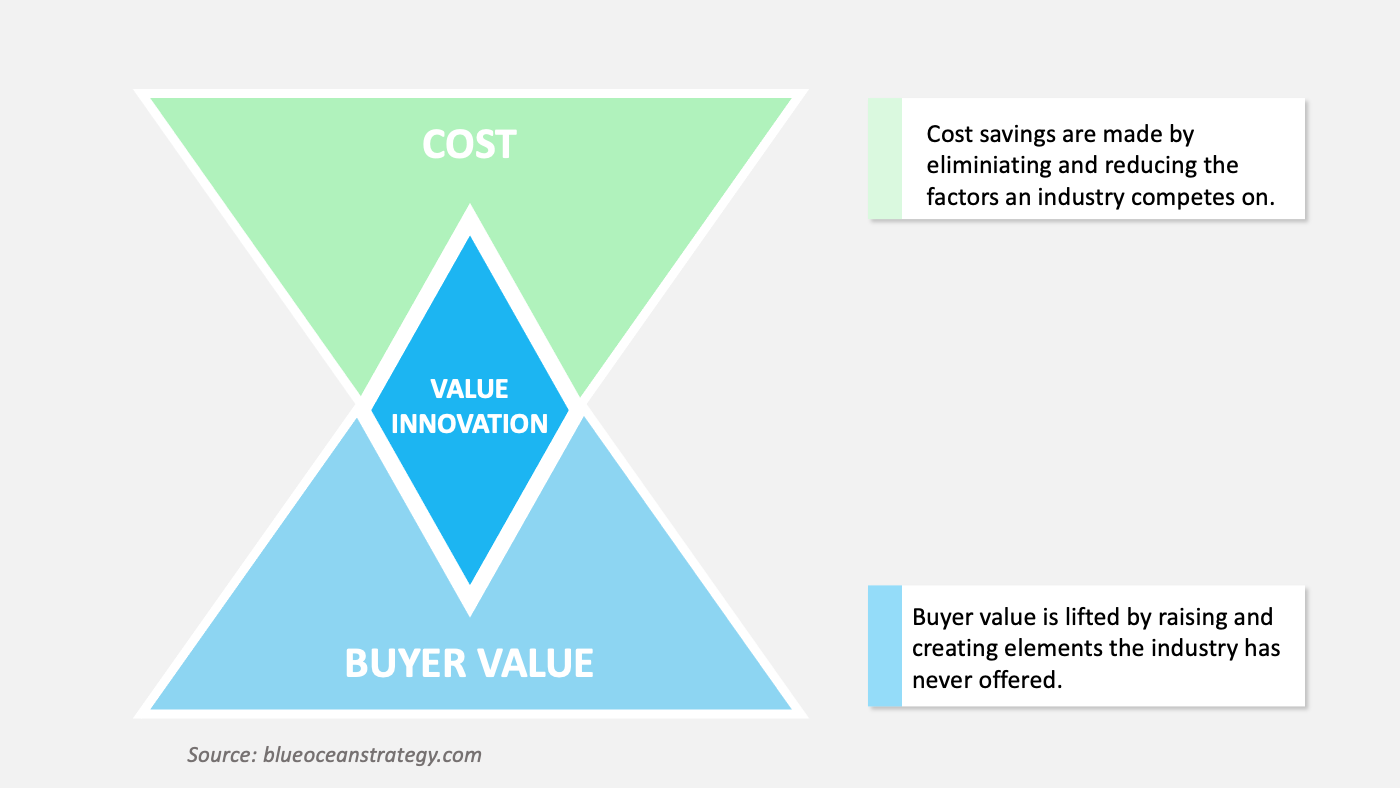
Top Market Intelligence Platforms for Different Business Functions in 2026


How does innovation create value? Many organizations have invested heavily in innovative projects and initiatives to create new sources of revenue or cost savings. However, it can be difficult to measure the actual impact these investments have on organizational performance
This article will answer: how does innovation create value? We will look at strategies for maximizing returns on investment from innovative projects and the challenges faced when implementing them.
Table of Contents
How Does Innovation Create Value?
Examples of New Discoveries Creating Value
Streamlining Processes Through Innovation
Measuring the Impact of Innovation on Value Creation
Financial Metrics for Evaluating Value Creation
Nonfinancial Metrics for Evaluating Value Creation
Strategies for Maximizing the Return on Investment from Innovative Projects
Leverage Existing Resources and Assets
Encourage Creativity and Risk Taking
Investing in research and development (R&D) can create immense value for businesses. By investing in new technologies, products, or processes, companies can stay ahead of the competition and increase their market share.
Additionally, by investing in R&D, companies can develop new solutions that solve customer problems and improve efficiency. This leads to increased profits as well as improved customer satisfaction.
When a company invests in R&D it shows potential customers that they are committed to providing innovative solutions which can help them stand out from the competition.
One example of how innovation creates value is through the development of new products or services.
For instance, Apple’s iPhone revolutionized the mobile phone industry with its touchscreen interface and intuitive user experience. It has created an entirely new product category that has since become ubiquitous across all industries.
Similarly, Amazon’s cloud computing platform has enabled businesses to access powerful computing resources without having to invest heavily in hardware infrastructure – allowing them to focus on developing innovative applications instead.
Innovation also helps streamline existing processes by introducing more efficient methods for completing tasks or automating certain aspects of workflows.
Automation tools such as robotic process automation (RPA) allow organizations to reduce manual labor costs while improving accuracy and consistency throughout their operations. This leads to cost savings over time while freeing up employees for higher-value activities like problem-solving or strategic planning initiatives.
Artificial intelligence (AI) technology enables machines to learn from data sets faster than humans ever could. This allows organizations not only to automate mundane tasks but also to uncover insights hidden within large datasets that would otherwise be too complex for humans alone.
How does innovation create value? Investing in research and development can lead directly towards greater value creation both through developing completely novel products and services as well as optimizing existing products using cutting-edge technologies such as AI and automation tools.
As such, any organization looking to maximize long-term returns should consider dedicating resources towards innovation efforts.

(Source)
How does innovation create value? Innovation is a key driver of value creation for organizations. Measuring the impact of innovation on value creation requires both financial and non-financial metrics.
Financial metrics such as return on investment (ROI) are used to assess the success of innovative projects in terms of their economic benefits. Non-financial metrics, such as customer satisfaction scores, can also be used to measure the impact of innovation on organizational performance.
Return on Investment (ROI) is one of the most commonly used financial metrics for evaluating value creation from innovative projects. ROI measures how much money an organization earns relative to its investments in a project or initiative over time.
It is calculated by dividing net income generated by total costs incurred during a given period. Organizations should use ROI calculations when assessing whether an innovative project has been successful in creating value or not.
Nonfinancial metrics are also important when measuring the impact of innovation on value creation because they provide insight into intangible aspects that cannot be measured using traditional financial indicators alone.
Examples include customer satisfaction scores, employee engagement levels, market share growth, and brand recognition rates among others. These non-monetary indicators can help organizations better understand how their innovations have impacted customers and other stakeholders over time and make informed decisions about future investments accordingly.
Innovation has the potential to create tremendous value for businesses. Understanding how it impacts value creation is key. By investing in research and development, developing a culture that encourages creativity and risk-taking, and leveraging existing products and assets, organizations can maximize their return on investment from innovation projects.
Key Takeaway: Innovation creates value when measured using both financial and non-financial metrics, such as ROI and customer satisfaction scores. Organizations should use these indicators to assess the success of innovative projects and make informed decisions about future investments accordingly.
To maximize the return on investment from innovative projects, it’s important to identify opportunities to leverage existing resources and assets, develop a culture that encourages creativity and risk-taking, and invest in research and development to generate new ideas and solutions.
Companies can often get more out of their investments by leveraging existing resources or assets. This could include re-purposing existing technology or data sets for new applications, utilizing internal expertise for problem-solving, or even partnering with other organizations that have complementary capabilities.
By doing so, companies can reduce costs while still achieving their desired outcomes.
Disruptive innovation requires an environment where employees feel comfortable taking risks without fear of failure. Leaders should create an atmosphere where creative thinking is encouraged through open dialogue between team members as well as providing rewards for successful innovation efforts.
Additionally, processes should be put into place that allows teams to quickly test out ideas without having to go through lengthy approval cycles which can stifle innovation efforts before they start.
Investing in research and development (R&D) initiatives helps foster disruptive innovation within the organization by providing resources necessary for exploring new ideas or technologies which may lead to breakthrough products or services down the line.
Companies should ensure they are investing enough money into R&D activities, but also make sure these funds are being used efficiently by setting clear goals at the outset of any project as well as measuring progress along the way towards those objectives.
By utilizing the right strategies and taking proactive steps to address potential challenges, organizations can maximize their return on investment from innovative projects while ensuring they have sufficient resources to support them.
Key Takeaway: Innovation is essential for creating value, and companies should focus on leveraging existing resources, developing a culture of creativity and risk-taking, as well as investing in R&D initiatives.
How does innovation create value? Innovation is an essential part of any organization’s success. It can create value in many ways, from increased efficiency to new product development.
However, organizations must be mindful of the challenges associated with implementing innovative projects and ensure that they are taking steps to maximize their return on investment. Ultimately, it is clear that when done correctly, innovation projects do create value and should be a key focus for all organizations looking to remain competitive in today’s market.
Are you looking for ways to create value through innovation? Cypris is the perfect platform to help your R&D and innovation teams get rapid insights.
We centralize all the data sources they need into one convenient place, allowing them to make informed decisions quickly. With our easy-to-use interface, innovative solutions are just a few clicks away! Sign up today and start creating value with Cypris.